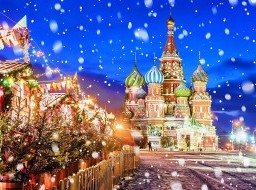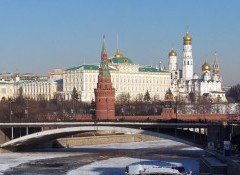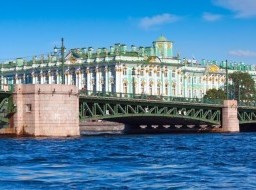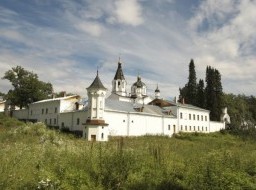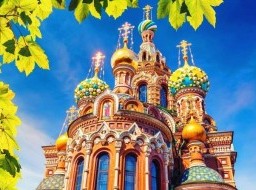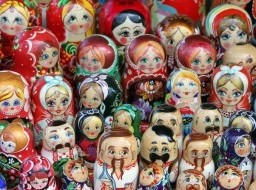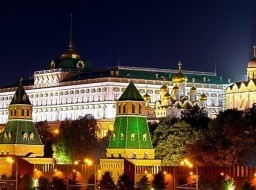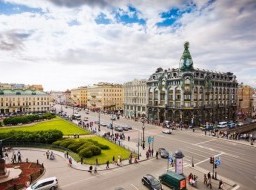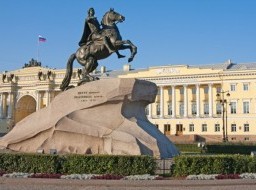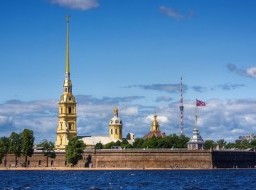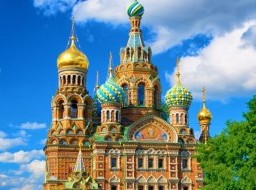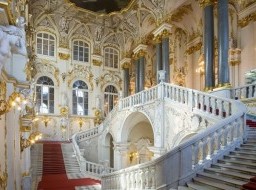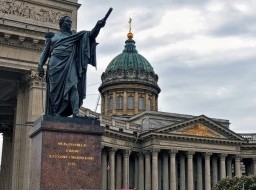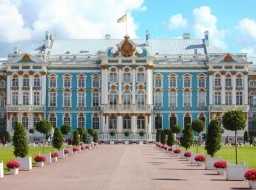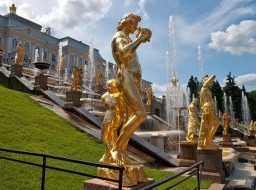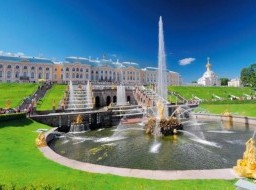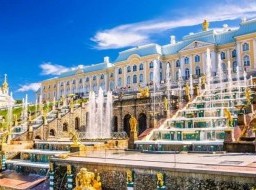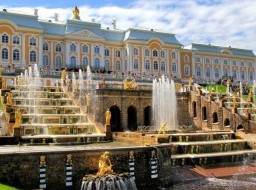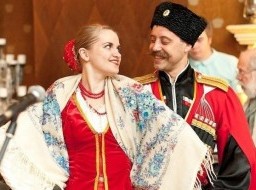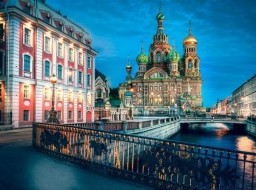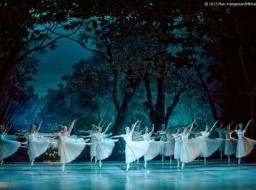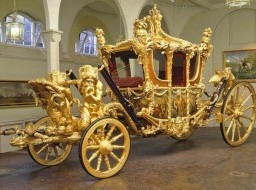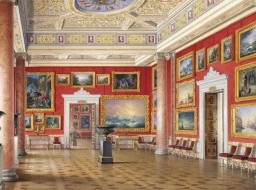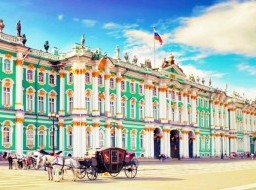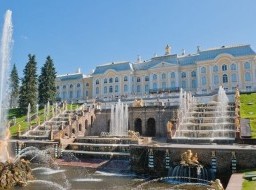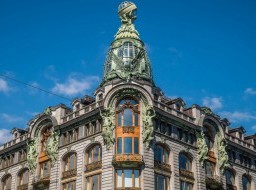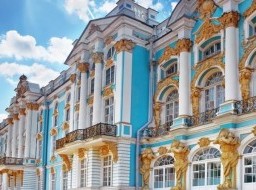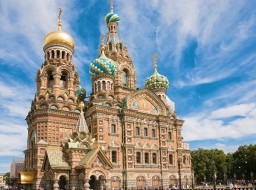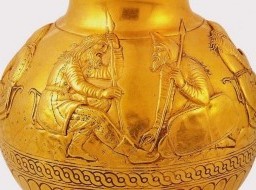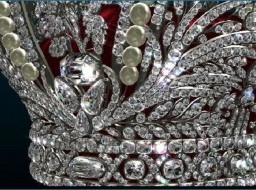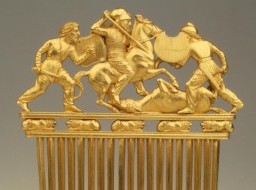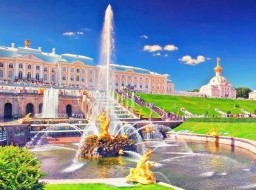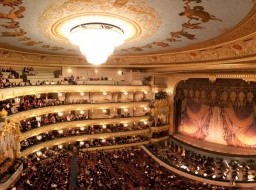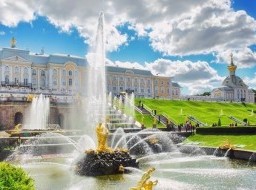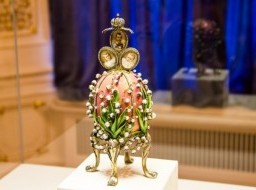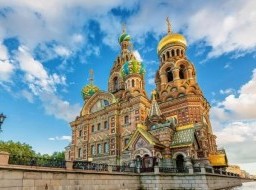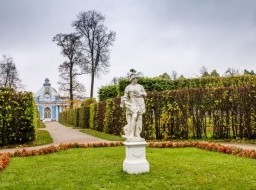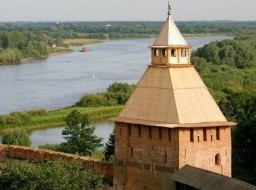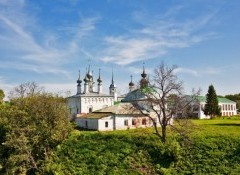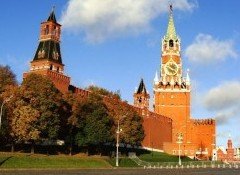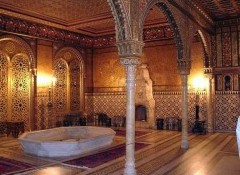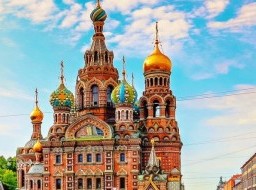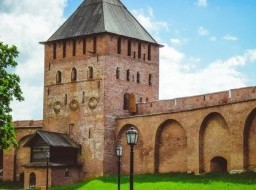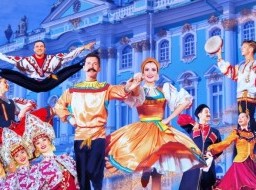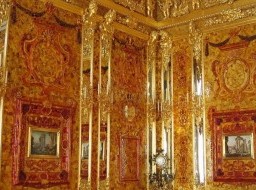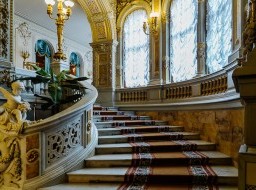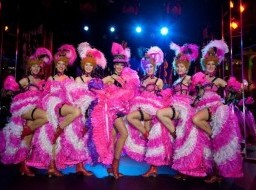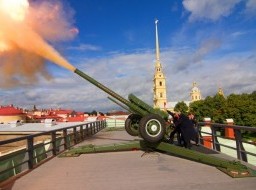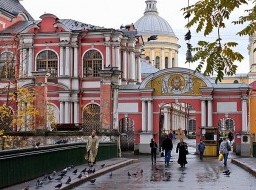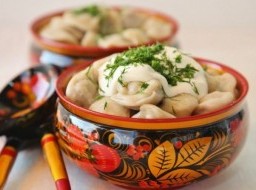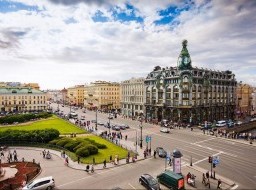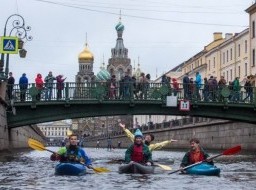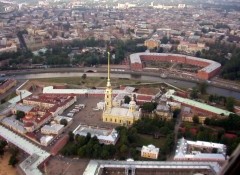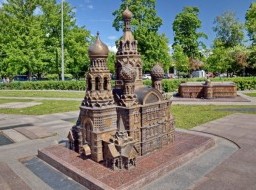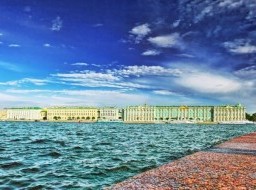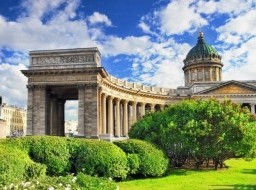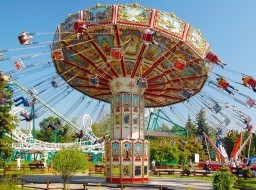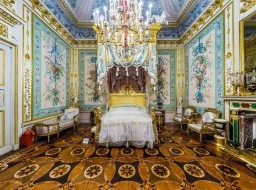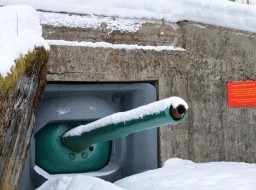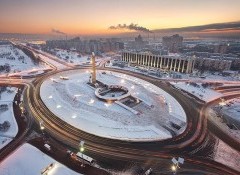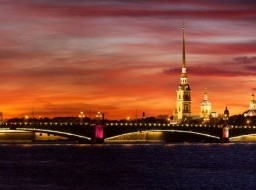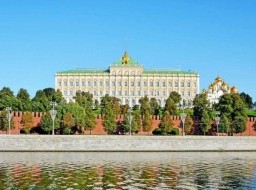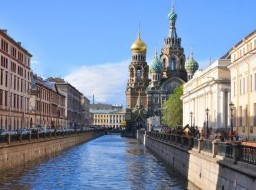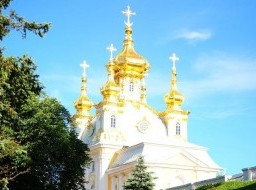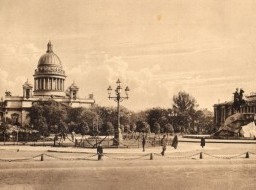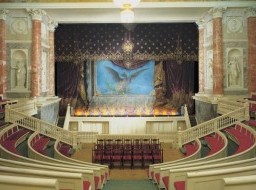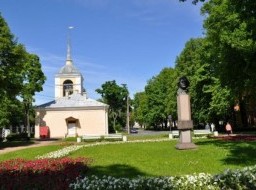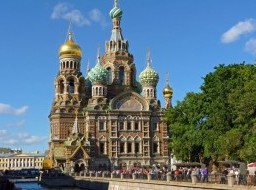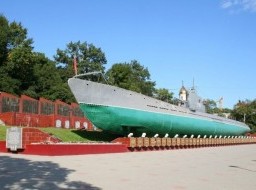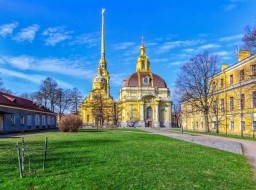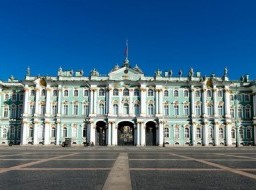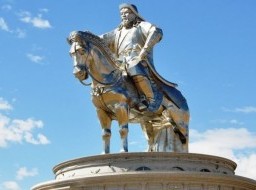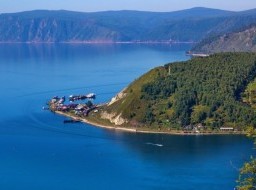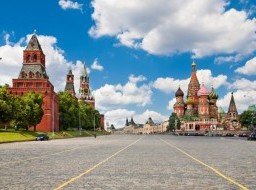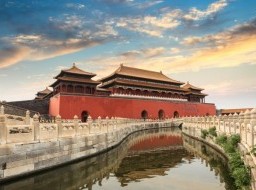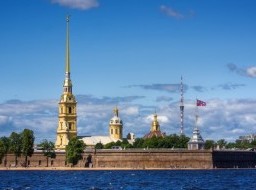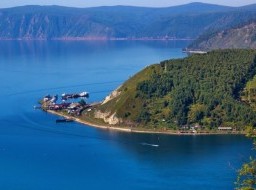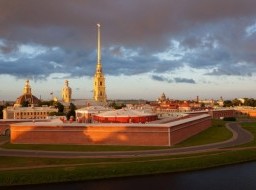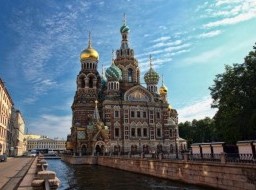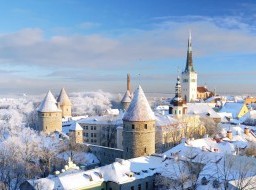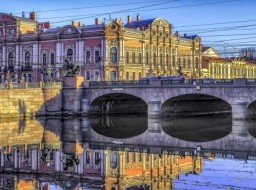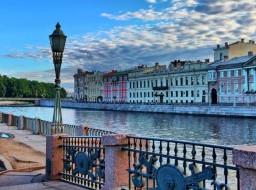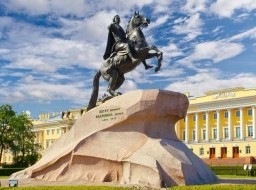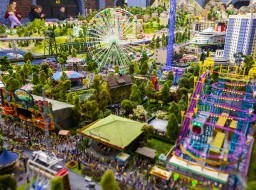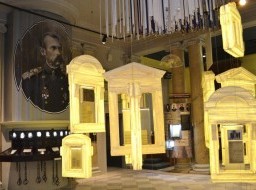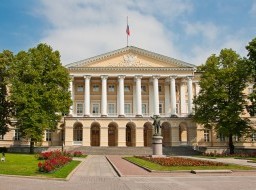Savior on Blood
The Cathedral of Our Savior on the Spilt Blood is a unique masterpiece combining the old Russian style of architecture, talent of the best Russian artists and Italian stone carvers, and the art of Roman mosaic. Mosaics cover almost all the surface of the walls and ceilings there are 7 500 square meters of mosaics all in all. It is a unique example of a Russian style cathedral in the centre of St. Petersburg. Its coloured onion domes are so famous, that they are recognized today as one of the symbols of the city. The style of the church was inspired by St Basil's Cathedral on Red Square in Moscow. The onion domes, mosaics and intricately decorated facade are characteristic of 16th to 17th century Russian architecture. Thus, it differs in from most of the buildings of st. Petersburg which follow the western traditions of Neo-Classical and Baroque architecture. The church is one of the top tourists attractions of St. Petersburg, a UNESCO World Heritage Site, and a popular spot for taking photographs and acquiring Russian souvenirs. You have an opportunity to see the Spilt Blood Cathedral in all its beauty. 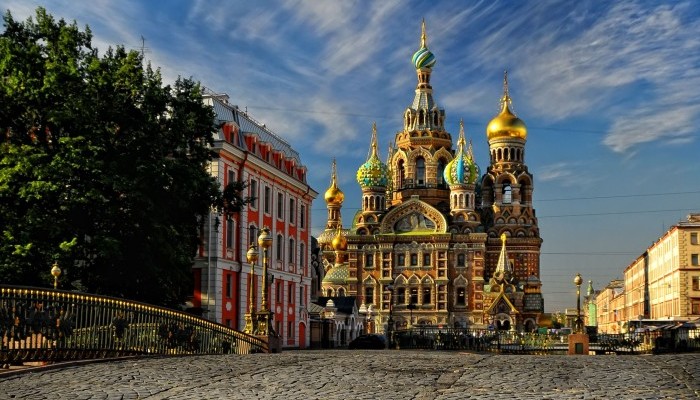 This church was built on the very site of Tsar Alexander II murder. Officially consecrated as the Church of the Resurrection of Christ, the Russian Orthodox gem more commonly known as the Church of the Savior on Spilled Blood was built to honor tsar Alexander II of Russia, who was assassinated at the site where the church now sits, hence the reference to "spilled blood". The section of the street on which the assassination took place is enclosed within the walls of the church and the site of the murder is marked by a chapel in the building. At the request of Alexander III, son of Alexander II, construction on the church began in 1883. Funding for this amazing structure was almost totally provided by the Imperial family with other donations made by private individuals. The project was completed in 1907.
The principle architect chosen for the project was Alfred Alexandrovich Parland, who was, incidentally, a non-Russian-born individual. The architecture of the church varies greatly from other buildings and religious structures in St. Petersburg, which were largely constructed in the Baroque and neo-Classical styles. The domes of the church of the savior on spilled blood The domes However, the era in which Church of the Savior was built was a time of resurgence of nationalism, thus the classic Russian style of the church. Looking at both the interior and exterior, it's easy to see why the church cost about 4.6 million rubles, way over the budgeted 3.6 million. The outside was designed to mirror the magnificent St. Basil's in Moscow, the city's easily-recognizable centerpiece, and the building - both inside and outside - features of mosaics, most of them designed by the prominent artists of the time, including Viktor Vasnetsov, Mikhail Nesterov and Mikhail Vrubel. The majority of the mosaics depict biblical scenes and saints though some are just patterns. The colorful onion domes, of which the central one reaches a height of 81 meter (266 ft), are covered with bright enamels. The cathedral boasts a luxurious and rich decor, ornamental architraves, frames, corbels, ceramic tiles, and colored glazed tiles. The belfry is decorated with mosaic coats-of-arms of cities and regions of the Russian empire. 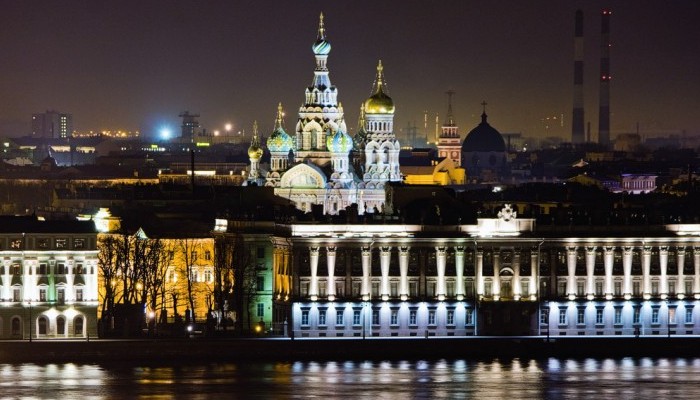 Interesting fact: This church never functioned as a public place of worship. Today it is a Museum of Mosaics. During the Russian Revolution of 1917, much of this amazing church was ransacked and the interior was seriously damaged. In the 1930s, the Soviets closed the church, as they did with most churches in St. Petersburg. During World War II, it was used as a storage facility for food. If suffered yet more damage during the war, and afterwards, was used for many years as storage space for a local opera company. In 1970, St. Isaac's Cathedral assumed management of the church, and funds garnered from the cathedral (which was, at that time, a museum) were used to restore the Church of the Savior. Restoration was finally complete in 1997 and remains one of St. Petersburg's top tourist attractions.
The Cathedral should not be perceived as simply a cult building; its idea is broader and deeper. The image of the Savior in this Cathedral reflects not so much the cult aspect, but the political, historical, artistic, stylistic importance of the monument, and underscores its importance for the city. The territory adjacent to the cathedral is one of the oldest areas of St. Petersburg, its historic downtown, which was formed in the first third of the 18th century. Because the church is located in the very heart of the city, its surroundings are of highest value. The historical and cultural environment here is extremely rich, represented by such treasures of world spiritual culture as the Russian Museum, the Maly Opera Theater, the Grand Philharmonic Hall, and churches of various confessions. The Cathedral is probably the only building in the city that stands out so much in its architectural and spatial environment with its silhouette, composition, and rich decor. 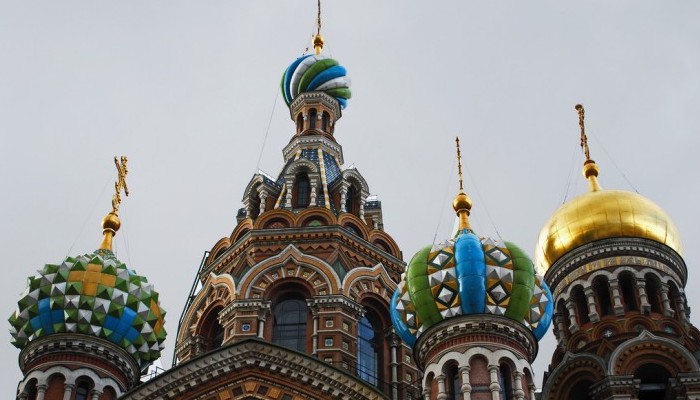 The Church of the Savior on Spilled Blood |
|
